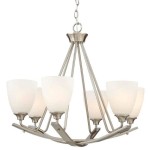Why You Shouldn't Decorate a Palm Tree
Decorating palm trees, while often intended to add a festive or aesthetic touch to a landscape, presents a multitude of potential problems and unwanted consequences. These range from damaging the tree itself to creating hazards for wildlife and potentially violating local regulations. A thorough understanding of these drawbacks is crucial before considering any form of palm tree decoration.
Potential for Physical Damage to the Palm Tree
The most immediate concern when decorating a palm tree is the potential for direct physical damage. Palm trees, although appearing robust, are surprisingly susceptible to injury from various decorative elements. Nails, screws, staples, and even tightly tied ropes or wires can penetrate the tree's bark and vascular system. This penetration creates entry points for pathogens, including fungi and bacteria, which can lead to diseases such as Ganoderma butt rot or Fusarium wilt, depending on the palm species and geographical location. These diseases can compromise the structural integrity of the tree, leading to instability and eventual death.
Furthermore, the constant rubbing and pressure exerted by decorations, particularly strings of lights or heavy ornaments, can cause abrasions and wounds on the trunk and fronds. These injuries disrupt the natural flow of nutrients and water within the tree, hindering its growth and overall health. The damage is often not immediately visible, making it difficult to assess the long-term impact of the decorations until significant harm has already been done.
The weight of decorations, especially during periods of heavy rain or wind, can also contribute to frond breakage. While palm trees naturally shed fronds as they mature, excessive weight can cause premature frond drop or even structural damage to the crown of the tree. This not only detracts from the tree's aesthetic appeal but also weakens its ability to photosynthesize and produce energy.
In addition to the direct physical damage caused by decorations, the process of installing and removing them can also be harmful. Climbing the tree, even with proper equipment, can damage the bark and compact the soil around the base, hindering root growth and water absorption. Similarly, careless removal of decorations can tear bark and injure fronds, leaving the tree vulnerable to infection.
Choosing inappropriate decorations, such as those made of materials that trap moisture or prevent air circulation, can also create favorable conditions for fungal growth and insect infestations. This is especially true in humid climates, where moisture can accumulate under decorations, leading to rot and decay. Therefore, prioritizing the tree’s health is paramount over the immediate visual appeal of decorations.
Threats to Wildlife and the Ecosystem
Beyond the immediate harm to the palm tree itself, decorating it can also pose significant threats to local wildlife and the surrounding ecosystem. Many species of birds, insects, and small mammals rely on palm trees for shelter, nesting sites, and food sources. Introducing foreign objects and materials into this environment can disrupt these natural processes and have negative consequences for wildlife populations.
Strings of lights, particularly those with small, easily ingested components, can be a choking hazard for birds and other animals. Similarly, loose wires and ribbons can entangle wildlife, leading to injury or death. The use of artificial materials, such as plastic ornaments and tinsel, can also contaminate the environment, as these materials do not decompose and can persist in the ecosystem for years, posing a threat to wildlife through ingestion and habitat degradation.
The bright lights associated with decorations can also disrupt the natural behavior of nocturnal animals, such as bats and owls, which rely on darkness for hunting and navigation. Artificial light can disorient these animals, making them more vulnerable to predators or collisions with structures. Furthermore, the noise associated with generators or other power sources used to operate decorations can disturb wildlife and disrupt their natural communication patterns.
Palm trees are often home to a variety of insects, some of which are beneficial to the ecosystem, such as pollinators and predators of nuisance pests. Decorating the tree can disrupt these insect populations, leading to imbalances in the local ecosystem. For example, the use of pesticides to control insects attracted to decorations can harm beneficial insects and disrupt the food chain.
Furthermore, the introduction of foreign materials to the palm tree environment can alter the soil chemistry and affect the growth of other plants. The accumulation of debris from decorations, such as fallen ornaments and broken lights, can also create unsightly litter and contribute to environmental pollution. Therefore, it is crucial to consider the broader ecological impact of palm tree decorations before implementing them.
Potential Legal and Regulatory Issues
While the ethical and environmental concerns surrounding palm tree decoration are significant, it is also important to consider the potential legal and regulatory implications. Many municipalities and homeowners associations have specific regulations regarding tree care and landscaping, which may prohibit or restrict the decoration of palm trees. Violating these regulations can result in fines or other penalties.
Furthermore, some palm tree species are protected by law, particularly those that are endangered or threatened. Decorating these trees can be considered a violation of conservation laws, as it can harm the tree and disrupt its habitat. It is essential to research local regulations and conservation laws before decorating any palm tree to ensure compliance.
In addition to municipal and state regulations, homeowners insurance policies may also have restrictions on tree decoration. If a decorated palm tree is damaged by storms or other natural events, the insurance company may deny coverage if the decorations are deemed to have contributed to the damage. It is crucial to review the terms of the insurance policy before decorating a palm tree to understand the potential liabilities.
Furthermore, if decorations cause injury to a person, such as a falling ornament or a tripping hazard created by wires, the property owner may be held liable. This is particularly true if the decorations are deemed to be negligently installed or maintained. Therefore, it is essential to exercise caution and ensure that any decorations are installed safely and securely to prevent accidents and injuries.
Finally, if the palm tree is located on public property, such as a park or street median, decorating it without permission from the local authorities can be considered trespassing or vandalism. It is always necessary to obtain the appropriate permits and approvals before decorating any tree on public land to avoid legal consequences. Understanding and adhering to these legal considerations is crucial for responsible and lawful landscaping practices.
Here S Why You Shouldn T Put Lights On Palm Trees Hilton Head Island Packet

Italian Town Discovers Why You Should Never Put Light On A Palm Tree The Sun

Pin On Memies

Palm Tree Landscaping Ideas Indoor And Outdoor Paradise Jay Scotts Collection

How To Decorate Palm Trees For

Wrapping Palm Trees In Miniature White Lights Make A Stunning Statement Holidays And Events Florida Holiday Photos

How To Light Palm Trees Hunker

Lights On Palm Trees Is It Safe Family Handyman

Longrv Artificial Palm Tree Indoor And Outdoor Decorate Green Plant Without Basin Com

Mosade Artificial Palm Tree 28 Fake Potted Areca Plant With Handmade







